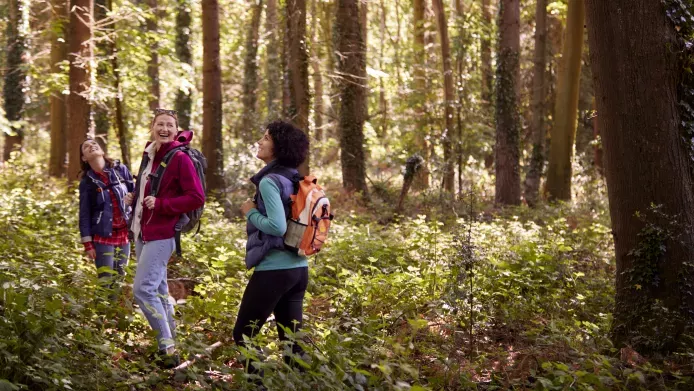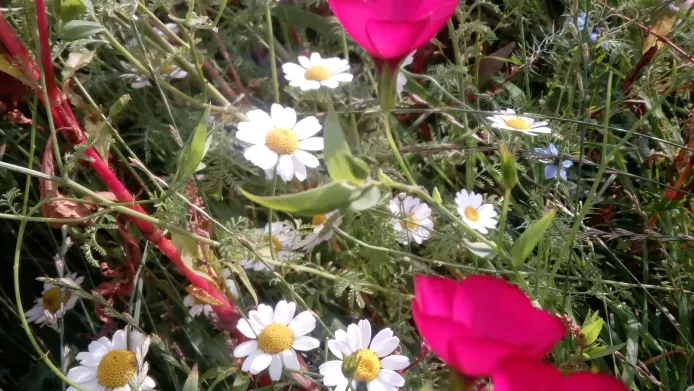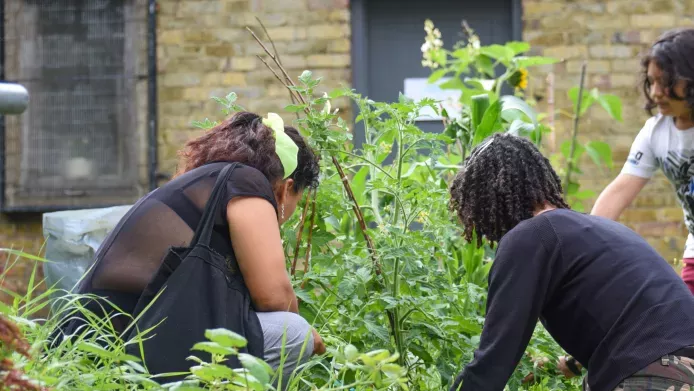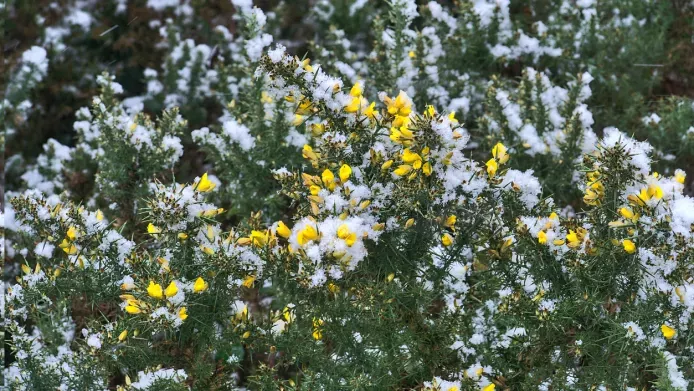Nature is good for our mental and physical wellbeing, but the benefits are different depending on our individual relationships with nature - known as ‘nature connectedness’. During winter it can be difficult to go outside and get the natural light exposure that we need. Here are some ways you can embrace nature and benefit your wellbeing this winter.

What is nature connectedness?
‘Nature connectedness’ is used by researchers to describe the individual relationships people have with nature. Ideally, this means feeling a close emotional attachment to it, and harbouring a sense of place in the natural world. After all, humans are a part of nature, and not meant to be separate from it.
Spending time in nature is proven to help to reduce stress, anxiety, and depression. It is not just about the amount of time you spend in natural environments; ‘nature connectedness’ emphasises the importance of feeling connection to those environments for positively impacting your wellbeing.
The good news is, we can cultivate nature connectedness by taking part in activities and repeated behaviours that engage our senses, reveal beauty around us, or find meaning in natural surroundings.
Nurturing our attachment to nature not only improves wellbeing, but also increases our pro-environmental and conservation behaviours (Natural England 2020).
Go wild and engage with nature
Parks, woodlands, and forests are often the first that come to mind when we think of natural spaces with mental health benefits, but a tree-lined street, nearby canal, or even a planted window box can make a difference. Research shows that engaging with nature at home and remotely, such as watching nature documentaries, can positively impact mental wellbeing. Whether you’re spending time outside or taking care of your houseplants, there’s always a way to notice and benefit from nature.
Getting started is a walk in the park... literally!
Here are some ways to start noticing nature:

If you can, we always encourage you to grow wild! Growing activities can not only enrich your own life but will make the world a healthier and more beautiful place for those around you.
If you’re new to growing, why not start by sowing some UK native wildflower seeds. You don’t need much space – a window box is enough – and the results are beautiful! Remember: growing is all about patience. Slow down, take notice, and see what you learn from witnessing the wonders of plant life.

Nature journaling is when you write, draw or even collage what you observe in nature. It’s mindfulness, art and science all rolled into one activity.
Some nature journals might be filled with scientific observations, some personal ruminations, some fictional explorations – why don’t you try and see what comes out?
You don’t have to be a writer or an artist to start a nature journal. Just pick up a recording device such as a notepad and pen and take yourself off to a green space.
- What are you curious about?
- What do you notice?
- What do you see, hear or feel?
- What do you think is happening underneath your feet?
There’s no such thing as a perfect nature journal, so don’t restrict or censor yourself.

Forest bathing, or shinrin yoku, is a Japanese method of relaxing amongst trees, observing nature around you whilst breathing deeply.
Some think of it as meditative, but for many it is as simple as taking a walk and consciously connecting to the environment around you. Forest bathing encourages you to use all your senses to engage with your surroundings. What can you smell? What colours can you see? What do you feel?
Taking time to slow down and observe your natural surroundings in this way is proven to reduce stress and boost wellbeing. We recommend looking closely at decaying wood to spot colourful mushrooms, spotting wildflowers, and listening for birdcalls – even in the depths of winter you might see a colourful jay, or a red robin!
There are pockets of woodland across the UK to discover, find a forest or woodland near you using the Woodland Trust search tool. Even if you can’t get outside, you can still bring the forest indoors with these online videos.
If you want help to get started, try Forestry England’s online guide to forest bathing.

Photography can be a great opportunity to slow down and focus on a feature of nature, in a creative way.
The best bit is we usually great photography tools in our pockets 24/7, our mobile phones! You might want to save what you’ve captured for yourself but you can also use social media to create a digital archive of your journeys in nature to share with friends and family.
If you share a picture on social media of any wonderful UK places or plants, don’t forget to tag us @GrowWildUK.
Plan for spring
Looking ahead to the growing season is a gentle reminder to yourself that this winter won’t last forever.
What can you plan to get you outside in spring? Maybe you’ll plant some daffodil bulbs on your street or start volunteering for a local community garden.
Read about which UK native spring bulbs you could plant.
Looking to volunteer? Find a community group with TCV.
Learn something new
Watch a nature documentary or read a book about wildlife and see what you learn.
Even if you learn one new thing about plants or wildlife, it can help engage you with the natural world.
Challenge: learn the name of one native wildflower from our Wildflower gallery.
Read some good news
It’s natural to feel overwhelmed or anxious when thinking or talking about the nature crisis and biodiversity loss, especially when there’s a lot of negative news out there.
But there are lots of amazing, positive things that people are doing to help conserve our wildlife and natural environments.
- Read WWF and Mental Health Foundation’s ‘Thriving With Nature’ guide to inspire you to make the most of nature for your mental wellbeing: Thriving-With-Nature.pdf
- Wild and Well Repository (johnmuirtrust.org)
- Valuing the mental health benefits of woodlands - Forest Research
- How's your nature connectedness? - UK NAEE
- Make a Date with Nature: An Introduction to Nature Journaling. Download the free ebook from www.paperbarkwriter.com
- Nature connectedness among adults and children in England - naturalengland.org
- 5 Ways to Wellbeing - MIND
Check out these resources to connect with nature from home



